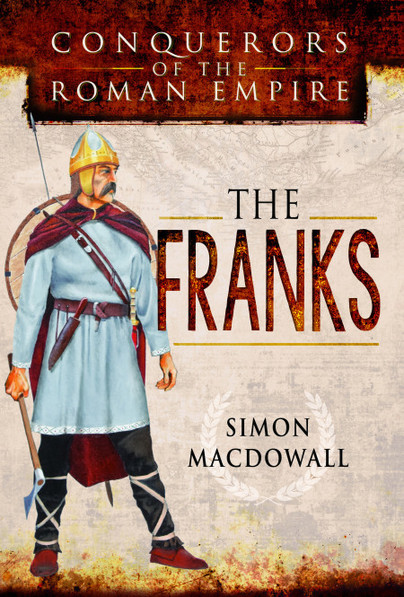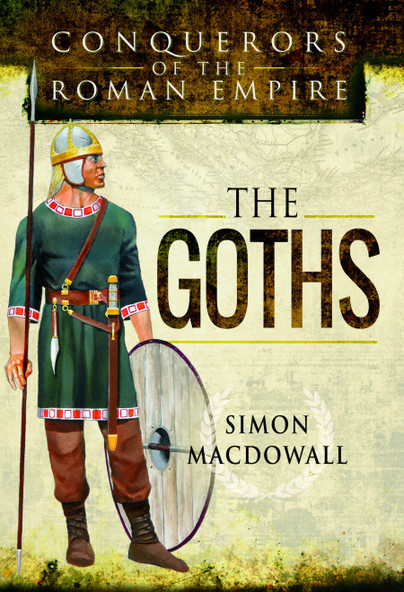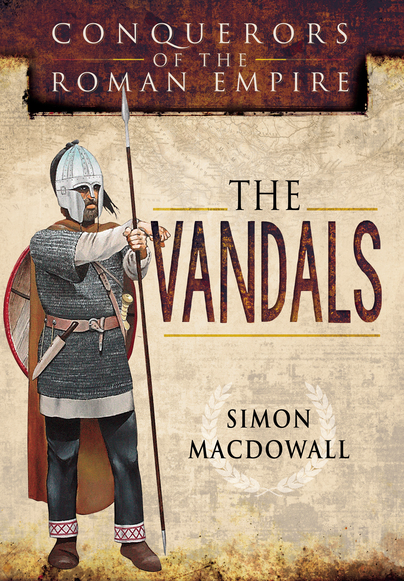Interview with Simon MacDowall
Here is author and wargammer Simon MacDowall. I do like it when I find authors that have similar interests. Just a shame, I can’t paint…
Tell us a little about yourself.
Although born in London, my parents emigrated to Canada when I was 10 and I grew up there. After graduating from Collège militaire royal de St Jean I was commissioned into the Royal Canadian Dragoons and saw service in Germany, Canada, Nicaragua, Honduras and the Balkans. In 1994 I was the United Nations press spokesman in Sarajevo during the Bosnian war. The following year I became NATO’s Chief of Press and Information for Allied Forces Northwestern Europe with responsibility for the UK, Scandinavia and the Baltic.
Later I left NATO to take on senior communications positions in the UK government, first as Director of Communications for the Department of Work and Pensions and then as the Director General Media and Communications at the Ministry of Defence. Since 2013 I have been earning my keep as a communication consultant and writer of military history.
I have always had a deep interest in military history, especially the period around the collapse of the Roman Empire in the West. I have written several books on the Roman army for Osprey in addition to the three books in Pen and Sword’s The Conquerors of Rome series. When not writing about military history I am re-creating it with painting and wargaming miniature armies.
After living in Canada, Germany and Belgium, and seeing service in Central America, Bosnia, Kosovo, Iraq and Afghanistan, I now make my home, together with Caroline Way, in Wenhaston, near Southwold on the Suffolk coast. I have 2 children: Katharina and Alexander. Both are married and living in London.
What made you focus on the period of history you have written about?
I have been completely fascinated by Roman military history for as long as I can remember. My interest was such that as an eight year old I persuaded my parents to find me a Latin tutor. I soon gave up when I realised learning Latin required hard work! In later years I found myself increasing drawn to the collapse of the West Roman Empire. The complex story of how classical civilisation passed away is fascinating and there are many parallels with our own time. I was working for NATO in the Balkans when thousands of Albanian refugees fled from Kosovo into Macedonia. I could not help but contemplate how Gothic refugees fleeing the Huns entered the Roman Empire in the same part of the world more than 1600 years previously.
Where do you do most of your writing?
All my recent books have been mostly written at the Lord Nelson Pub, Southwold, Suffolk, UK with time off in-between to write chapters in the places I am writing about. Parts of the Vandals were written in Tunis (ancient Carthage), the Goths in Arles (southern France) and the Franks in northern France and western Germany.
Share one strange fact you found while researching your work?
Perhaps the most surprising fact I found out was that 5th century ‘barbarians’ (Goths, Vandals and Franks) were normally clean shaven while Romans wore beards. I first noticed this when examining the base of the column of Theodosius in Istanbul (ancient Constantinople). The Germanic guardsmen depicted there have long hair and are clean shaven while all the Romans have short hair and beards. This piqued my interest as the barbarians of our imagination are pretty hirsute with shaggy beards and our imaginary Romans are clean shaven. Every other piece of evidence I looked at from the Ravenna and Carthage mosaics to coins of the Goths and Vandals showed the same — long haired but clean shaven (or sometimes moustachioed) barbarians and short haired and bearded Romans. As an aside, another interesting fact from the base of the column of Theodosius is that the Germanic guardsmen appear to be carrying some sort of prototype kite shields — wider at the top than at the bottom. Although I had seen the column many times I had never noticed this until I saw it together with my partner Caroline. As an artist she immediately picked out the perspective I had missed.
What is your favourite resource for carrying out research?
Well the internet is a great boon. With it I can access obscure ancient texts that would be nigh on impossible to source in the pre-internet age. It is also a great resource for sourcing photos which would otherwise also be hard to find. That said there is nothing like the first hand experience and actually going our to see the places I want to write about. So a big part of my research for the Vandals was to go to Tunisia and visit the places they conquered. The same for the Goths in Spain and Italy. When I am researching a specific battle I believe it is essential to actually walk the ground over which the men fought. With my military background I can look at the terrain with a soldier’s eye and start to make sense of the texts I have read. Terrain walks near Tours and Châlons in central France completely changed my perspective on the Battle of the Catalaunian Plains (AD 451) when I was researching my Osprey book on that campaign.
What are you working on next?
I have shifted forward in time to look at the wars of Louis XIV. A book on the Battle of Malplaquet (1709) is forthcoming later this year. I am also delving into the Wars of the Roses in light of the new archaeological discoveries that have turned all we thought we knew about the Battle of Bosworth on its head.
Where can people find about more about your work? Are you active on social media, publish your own website for example?
I am active on social media. My website www.legio-wargames.com focuses primarily on my wargaming activities but does so through a historical lens. I also have a blog associated with my website at http://legio-wargames.com//blog/4591469581.
Books
Conquerors of the Roman Empire: The Franks
Simon MacDowall examines how this relatively small group of Germans came to be overlords of all of the former Roman province of Gaul, giving their name to France in the process. From their earliest incursions into the Empire, down to the Battle of Casilinum (554), their last battle against Romans, he studies the Frankish way of warfare and assesses its effectiveness. The size and composition of their armies, their weapons (including the characteristic Francisca axe), equipment and tactics are discussed.
In this tumultuous period, the Franks had a complex relationship with the Romans, being by turns invaders, recruits to the legions and independent allies. Accordingly, this book also covers the Franks’ role in defending the Rhine frontier against subsequent invasions by the Vandals, Alans, Suebi and the Huns. Their success in defending their new homeland against all comers allowed them, under the leadership of the Merovingian dynasty of Clovis, to establish the Frankish kingdom as one of the most enduring of the ‘barbarian’ successors to the power of Rome.
Conquerors of the Roman Empire: The Goths
In the late 4th century, pressure from the Huns forced the Goths to cross the Danube into the Roman Empire. The resultant Battle of Adrianople in 378 was one of Rome’s greatest defeats. Both western (Visigoth) and eastern (Ostrogoth) branches of the Goths had a complex relationship with the Romans, sometimes fighting as their allies against other ‘barbarian’ interlopers but carving out their own kingdoms in the process. Under Alaric the Visigoths sacked Rome itself in 410 and went on to establish a kingdom in Gaul (France). They helped the Romans defeat the Hunnic invasion of Gaul at Chalons in 451 but continued to expand at Roman expense. Defeated by the Franks they then took Spain from the Vandals. The Ostrogoths had a similar relationship with the Eastern Roman Empire before eventually conquering Italy. Adrianople, the events of 410 and the Ostrogoths’ long war with Belisarius, including the Siege of Rome, are among the campaigns and battles Simon MacDowall narrates in detail. He analyses the arms and contrasting fighting styles of the Ostro- and Visi- Goths and evaluates their effectiveness against the Romans.
Conquerors of the Roman Empire: The Vandals
On 31 December AD 406, a group of German tribes crossed the Rhine, pierced the Roman defensive lines and began a rampage across Roman Gaul, sacking cities such as Metz, Arras and Strasbourg. Foremost amongst them were the Vandals and their search for a new homeland took them on the most remarkable odyssey. The Romans were unable to stop them and their closest allies, the Alans, marching the breadth of Gaul, crossing the Pyrenees and making themselves masters of Spain.
However, this Kingdom of the Vandals and Alans soon came under intense pressure from Rome’s Visigothic allies. In 429, under their new king, Gaiseric, they crossed the straits of Gibraltar to North Africa. They quickly overran this rich Roman province and established a stable kingdom. Taking to the seas they soon dominated the Western Mediterranean and raided Italy, famously sacking Rome itself in 455. Eventually, however, they were utterly conquered by Belisarius in 533 and vanished from history. Simon MacDowall narrates and analyses these events, with particular focus on the evolution of Vandal armies and warfare.
Also do note Simon, does have his other books available on his own website
< BACK

